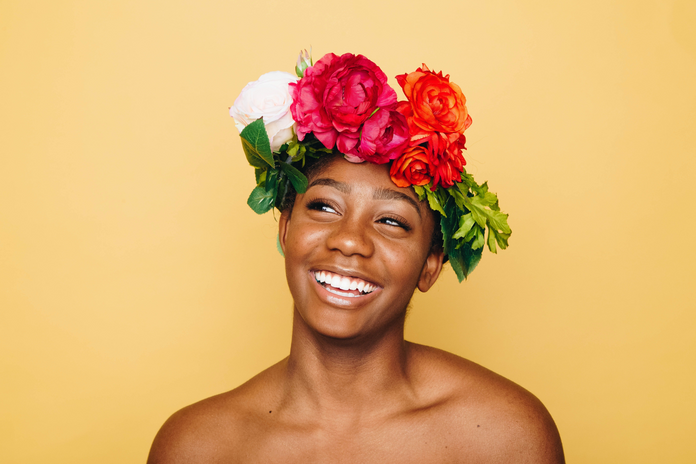The flower is a popular motif in fashion. It holds countless symbolism, both historically and culturally; some being of femininity and beauty, or love and peace. 2023 was, undoubtedly, the year of reclaiming femininity. The movie, ‘Barbie’ encouraged us to embrace our womanhood, consequently pink was in and feminine fashion resurged our world, with bows, hearts, ballet-core, coquette and flowers.
Floral appliques are nothing new to the fashion industry. It was prominent in the 90s and 2000s, and came back in 2023. We’ve seen rosettes styled on string chokers, the shoulders or hips of asymmetric co-ords, statement shoes, belts and brooches.
With 2023 seeing the rosette applique trend through, we have started to see more of a botanical bloom in our accessories; Lilies, Orchids and Hibiscus. This 3D floral trend will most likely carry us to the summer of 2024.
The issue of sustainability must be brought up as trends such as these are mostly short-lived. Micro-trends have, arguably, permeated the fashion industry due to newfound ‘aesthetics’, the new age of influencers (perhaps on ‘TikTok’) and toxic companies such as ‘Zara’, ‘PLT’ and ‘Shein’. This is a form of fast fashion, where big brands will rely on underpaid workers in dangerous conditions, using low quality synthetic materials, toxic dyes and harmful chemicals. Due to these trends being so short-lived, most garments end up in landfills. Fashion production already contributes to a 10th of the world’s carbon emissions, so micro-trends just accelerate this footprint.
What I love about fashion is that you don’t always have to commit to one look, but we have to be mindful about how we go about personal style and trends. So, don’t let this throw you off of participating in this stunning floral trend, because I will share some ways in which you can partake sustainably and on a budget.
Dolce and Gabbana’s collection of Hibiscus heels (dating even from the 90s and 2000s) have been recirculating on the internet. However, most of us cannot afford to ‘splash cash’ on £1300 shoes. Inversely, we have been overexposed to the cheap synthetic materials of Zara’s asymmetrical rosette applique dresses, co-ords and tops.
A quick and easy DIY applique means that you can upcycle and renew any of your existing garments by just buying artificial flowers. These can be found online or in most home sections of stores. Depending on what you have available to you, either sew, glue or safety pin a flower to any basic garment. Now you have a staple piece in your wardrobe, that you can decide to switch up at any time, if the trend no longer speaks to you.
Additionally, using a safety pin may allow you to create new silhouettes with your garments, pinning them up and ruching them, causing your piece to be completely transformed. Of course, you could buy garments with this feature from vintage stores or second-hand sites, such as Depop or Vinted.
Floral accessorisation is too far-reaching to honour a singular originator, so some of my favourite inspirations for this trend are Sarah Jessica Parker and, sentimentally, my late Grandmother.
When my late Grandparents lived in India, my Grandfather would buy Jasmine, wrapped in brown paper, with which my Grandmother would adorn her hair. My own take on this trend will be to pay homage to my Grandparents; I’ll buy artificial Jasmine and style it in my hair or outfits, on my shoes perhaps. This is utilising fashion in a meaningful and personal way.
I think that we need to apply this to our fashion more, so that we can avoid micro-trends.


